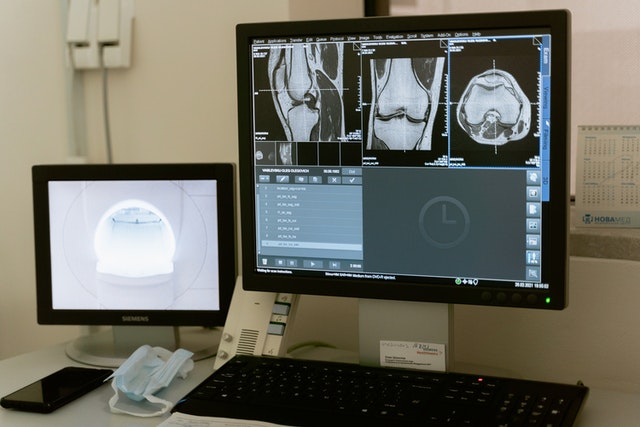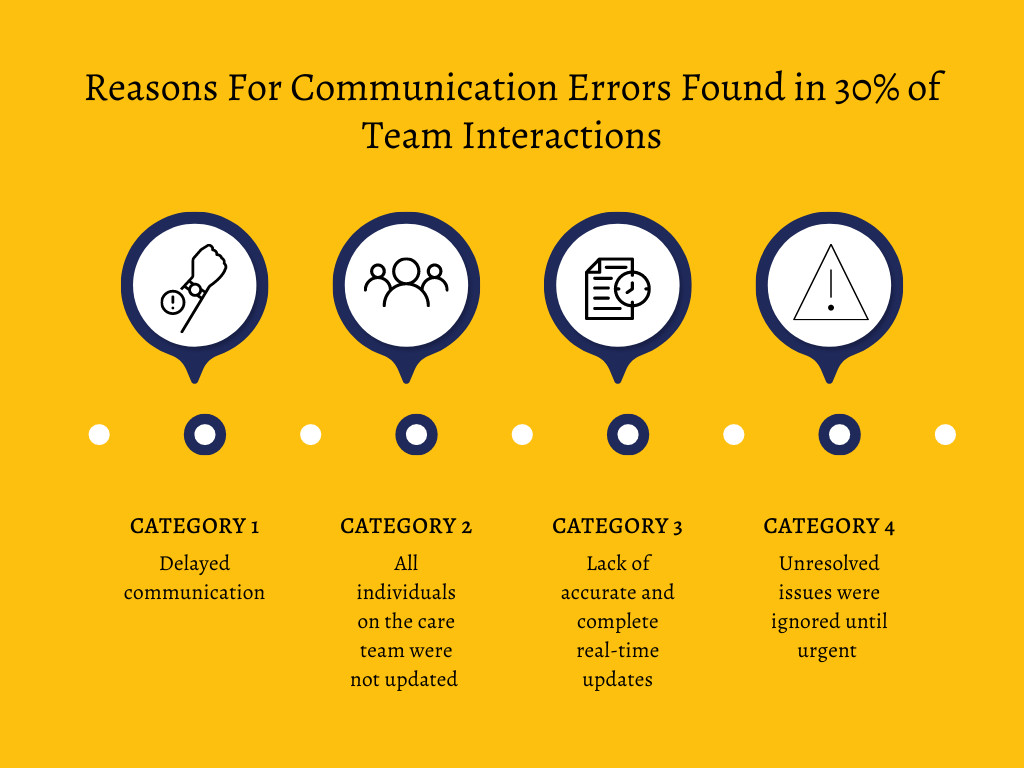
Abstract
COVID-19 has increased physician burnout in the past few years. The current system involves one-way pagers and phone calls that require a standby clinician to answer and respond1. This results in clinicians requesting and receiving large amounts of information in an outdated system. The current systems lead to a breakdown in communication which can cause preventable errors in treatment2. Additionally, the increased time spent by clinicians to use the current inefficient EHR systems can result in a decrease in time with patients and a lower quality of care.
Digital health solutions can improve provider satisfaction and patient treatment with the proper innovations. These innovations include personalized communication tools, real-time updates on a patient and their care team, and a central EHR system for clinicians and patients. Improved clinical communication and collaboration tools lead to reduced costs, better patient outcomes, more positive experiences for patients and staff.

Introduction
The government passed the HITECH act in order to increase the implementation of EHR systems across the nation3. These current systems provide large amounts of disorganized data and do not allow clinicians to prioritize certain information over others. This leads to burnout because clinicians have to spend a longer time documenting and reporting patients’ information. Additionally, current tools for promoting collaboration between clinicians are lacking, which also results in increased burnout4. It is imperative that digital health tools successfully promote collaboration and streamline large amounts of information.

Background
Clinician burnout is increasing due to the overwhelming demand caused by the pandemic. The EHR systems doctors currently use have seen insignificant advancements made to improve user experience3. Furthermore, doctors are not able to effectively communicate with one another, and this can result in preventable medical errors4. Currently, clinicians have access to one-way pagers, an overhead system that provides alerts to the entire hospital, and phone calls between departments4.
The problem with these tools is that the doctor requesting information on a patient has no information on who to actually contact. Doctors essentially have to backtrack the source of information by calling back and forth before they are able to move forward with new information. By the time a doctor figures out who to contact regarding a patient, there may be new information that they are unaware of. It is ineffective to have multiple outdated devices for communication. Pagers and phone calls are only capable of providing short information and they are unable to track real-time updates.
Another problem with current EHR systems is their inability to organize and prioritize data. For instance, some hospitals use the overhead system to communicate emergencies that require immediate care. Not only does this interfere with other patients, but there is no way to keep track of when the notification went out and who responded to it5. Furthermore, clinicians are unable to prioritize and track alerts based on urgency. This can result in inefficient care and increase the time it takes for a patient to receive treatment.

Solutions
Hospital-Specific Smartphones
We can streamline the process of clinicians and nurses communicating with each other by allowing them to receive real-time updates on a patient’s status without leaving their side5. Physicians can use a hospital-specific smartphone that has a secure connection and can send various notifications to their staff2. This allows the care team to communicate via push notifications through text messages, images, phone, or even video calls5. Clinicians can provide notifications on medications, alerts on a patient, and real-time updates on the care team. When Banner Health implemented the integrated communication system, patients were able to receive care faster, there was less distraction in the nighttime, and patients were able to receive help going to the bathroom when requested2. Overall, clinicians spent less time tracking clinicians for information, and more time caring for patients.
Digitally Tracking Real-time Alerts
Furthermore, being able to track messages digitally allowed clinicians to prioritize certain updates over others. The care team can escalate patients’ emergencies depending on the urgency of the alert and then send them to the correct specialized team. They can also receive responses on which staff member sent a message, the time it took for a response, and who responded5. Being able to track messages allows clinicians to provide prior authorizations and even second opinions faster5 since they don’t have to spend time backtracking information. The care team will be able to receive and track real-time updates through this new integrated system, allowing better outcomes for patients.

Central EHR System
These tools promote clinician collaboration which is becoming increasingly important in reducing clinician burnout. Another tool to reduce burnout relies on integrating a central electronic health record system. This digital system should be accessible by all physicians in the hospital care system. Coordinated care will allow different departments to access the same information without backtracking the source. Furthermore, patients and their families can use the system to access their information from the same place. Since all of the data is easily accessible in one location, clinicians can track and analyze information more effectively. Additionally, a central EHR system increased the patient portal participation rate to 55%7 from the national average of 15-30%8.
Team collaboration has proven to decrease burnout caused by EHR systems3. If nursing staff, students, scribes, and even patients help with documentation, it can lessen the burden faced by clinicians. Therefore, clinicians and patients can have more positive experiences accessing data when a central EHR system is in place.
Conclusion
These integrated solutions allow clinicians to spend less time organizing and looking for information, and more time with the patient. This inevitably will lead to fewer medical errors, more efficient treatment plans, and reduced costs for the patients. Additionally, clinicians will have better tools that promote communication and collaboration, resulting in greater satisfaction and decreased burnout.
To have a more in-depth conversation with HITS, visit this link to schedule a 15-minute consultation: https://bit.ly/3rosgAG
References
- https://healthtechmagazine.net/article/2021/11/how-clinical-collaboration-has-evolved-over-years-and-why-its-important-now
- https://ehrintelligence.com/news/how-banner-health-modernized-clinical-communications-collaboration
- https://www.healthcareitnews.com/news/alleviate-ehr-burdens-teamwork-makes-dream-work
- https://ehrintelligence.com/news/how-banner-health-modernized-clinical-communications-collaboration
- https://snip.ly/6eohet#https://healthtechmagazine.net/article/2021/11/clinical-communication-and-collaboration-tools-support-healthcares-quadruple-aim
- https://www.ahrq.gov/downloads/pub/advances2/vol3/advances-dingley_14.pdf
- https://ehrintelligence.com/features/meditech-ehr-implementation-supports-data-sharing-during-covid-19
- https://www.medicaleconomics.com/view/who-does-and-doesnt-use-patient-portals